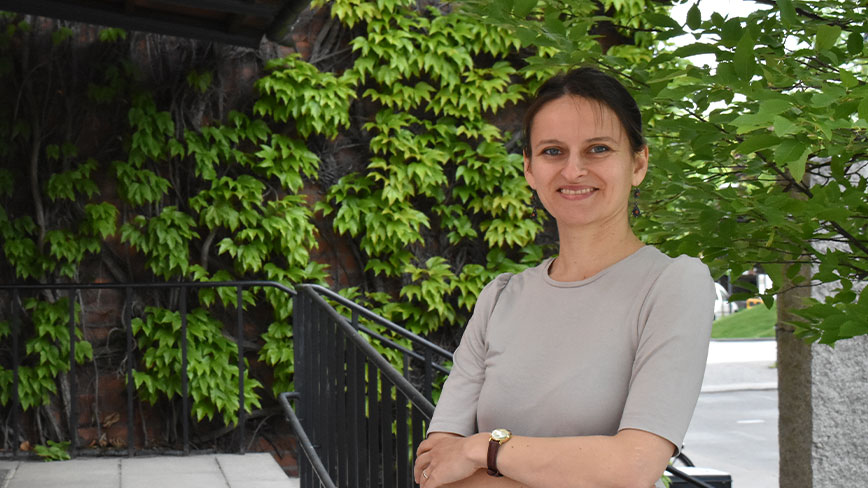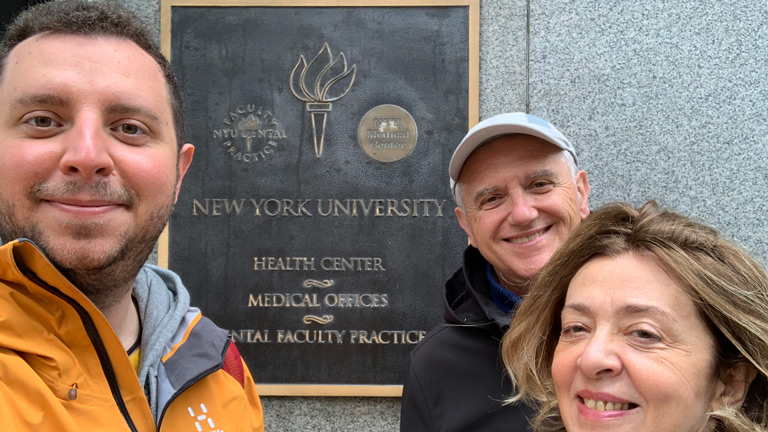Get to know the doctoral student Lukas
– the faculty staff

We will introduce the school's faculty employees in a series of articles. This is Lukas Bähner, a doctoral student at the Division of Electromagnetic Engineering and Fusion Science (EMF) – whose ambition is to take the Sun's power to Earth.
Lukas is from Germany, and he studied Electrical Engineering in Aachen, which happens to be an exchange university of KTH.
“It's how I heard of KTH. I decided to do my master's here and entered the Electromagnetics, Fusion, and Space Engineering master's program. Sweden is very likeable, so I wanted to go here.”
The interest in math and physics has always been there, and Lukas was still in school when he decided which direction to go.
“I wanted to do some good, combined with my interest. My goal was to go into energy and to find improvements for energy consumption which is a big part of climate change. Then I heard about fusion.”
Bringing the power of the Sun to Earth
When Lukas talks about fusion, a light turns on in his eyes. Fusion energy is a clean future energy source which uses hydrogen isotopes that can be found in sea water and can be expected to be obtained with lithium. And it's hard to make.
Lukas started his doctoral studies in September 2022, supervised by Associate Professor Thomas Jonsson . Together they do theory and modelling of how to make fusion at high temperatures.
“My major goal is to contribute to making fusion energy a reality which would solve many problems . With fusion energy, there are no co2 emissions. People have researched this for decades, and now I want to contribute.”
But two hundred million degrees Celsius is hard to make; it is the hottest temperature in the solar system. Experiments are being done with super-hot gas in a container, but it is hard to control and make stable. But Lukas is optimistic.
“Progress is being made, and we should have fusion energy this century. It looks promising, but it's a bit late; we really need this energy” , Lukas emphasizes.
The teaching assistant of the year
Besides his goal of being part of solving the energy crisis, Lukas is considering a future in teaching.
He has been helping with the exercise sessions for Lars Jonsson's course in electromagnetic theory, which gave him a taste for more.
“I like it a lot. It's fun and rewarding to help the students. I think about what I would have liked to hear as a student since it's a difficult topic. I remember you need to learn a lot in a short time. I help with structure and easy instructions to make it less overwhelming.”
And apparently, Lukas' efforts were as appreciated by the students as by him:
“I was chosen as the Teaching assistant of the year from the Electrical chapter. It meant a lot to me and made me consider a future in teaching even more!”
"Swedes are very polite."
Like many Germans, Lukas has fallen in love with the Swedish landscape and the forests. In his spare time, he likes climbing at the climbing gym, Gasverket. He also enjoys playing football and swimming in the lakes.
Even though Germany is not far away, Lukas points out a significant difference between the Germans and the Swedes.
“We are quite similar, but there is one significant difference: the politeness; Germans can be very rude while Swedes are very polite.”
Related news

Get to know the doctoral student Lukas
We will introduce the school's faculty employees in a series of articles. This is Lukas Bähner, a doctoral student at the Division of Electromagnetic Engineering and Fusion Science (EMF) – whose ambit...
Read the article
Get to know the doctoral student Sylvie
In a series of articles, we will introduce the faculty employees. First out is Sylvie Koziel, a doctoral student at the Division of Electromagnetic Engineering and Fusion Science (EMF). Learn about he...
Read the article
The visit to NYC gave him new colleagues and new insights for his research
A desire to strengthen his knowledge, meet new people, and create new connections for his research led Corrado Capriata to a seven-month research exchange.
Read the article